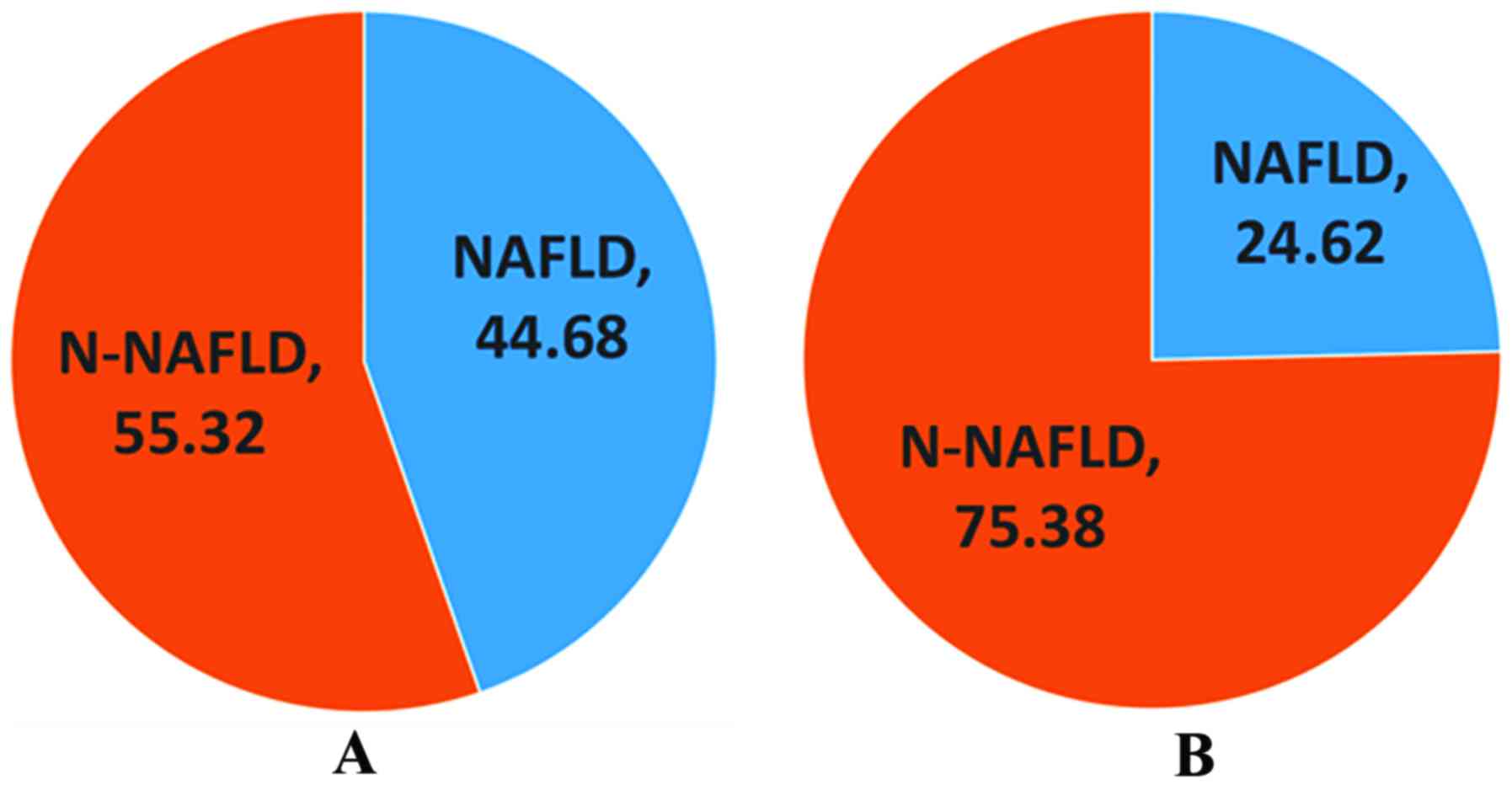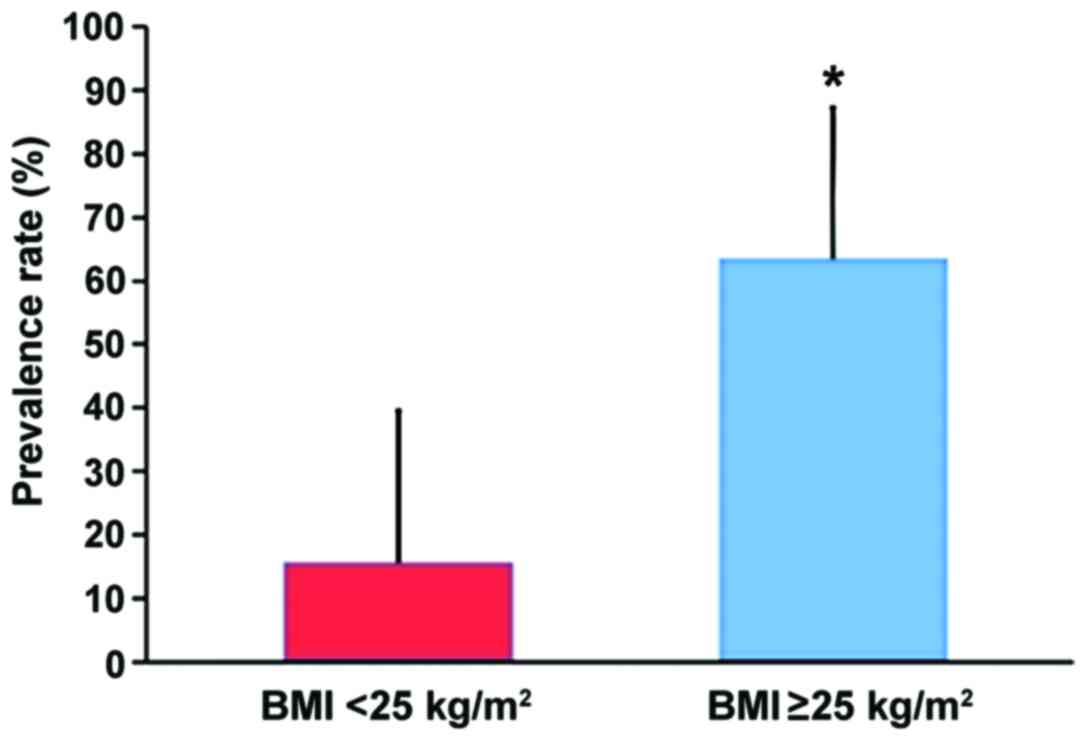|
1
|
Joham AE, Teede HJ, Ranasinha S, Zoungas S
and Boyle J: Prevalence of infertility and use of fertility
treatment in women with polycystic ovary syndrome: Data from a
large community-based cohort study. J Womens Health (Larchmt).
24:299–307. 2015. View Article : Google Scholar : PubMed/NCBI
|
|
2
|
Rotterdam ESHRE/ASRM-Sponsored PCOS
consensus workshop group: Revised 2003 consensus on diagnostic
criteria and long-term health risks related to polycystic ovary
syndrome (PCOS). Hum Reprod. 19:41–47. 2004. View Article : Google Scholar : PubMed/NCBI
|
|
3
|
Brunt EM: Nonalcoholic steatohepatitis:
Definition and pathology. Semin Liver Dis. 21:3–16. 2001.
View Article : Google Scholar : PubMed/NCBI
|
|
4
|
Kelley CE, Brown AJ, Diehl AM and Setji
TL: Review of nonalcoholic fatty liver disease in women with
polycystic ovary syndrome. World J Gastroenterol. 20:14172–14184.
2014. View Article : Google Scholar : PubMed/NCBI
|
|
5
|
Gambarin-Gelwan M, Kinkhabwala SV, Schiano
TD, Bodian C, Yeh HC and Futterweit W: Prevalence of nonalcoholic
fatty liver disease in women with polycystic ovary syndrome. Clin
Gastroenterol Hepatol. 5:496–501. 2007. View Article : Google Scholar : PubMed/NCBI
|
|
6
|
Matthews DR, Hosker JP, Rudenski AS,
Naylor BA, Treacher DF and Turner RC: Homeostasis model assessment:
Insulin resistance and beta-cell function from fasting plasma
glucose and insulin concentrations in man. Diabetologia.
28:412–419. 1985. View Article : Google Scholar : PubMed/NCBI
|
|
7
|
Brzozowska MM, Ostapowicz G and Weltman
MD: An association between non-alcoholic fatty liver disease and
polycystic ovarian syndrome. J Gastroenterol Hepatol. 24:243–247.
2009. View Article : Google Scholar : PubMed/NCBI
|
|
8
|
Ortiz-Lopez C, Lomonaco R, Orsak B, Finch
J, Chang Z, Kochunov VG, Hardies J and Cusi K: Prevalence of
prediabetes and diabetes and metabolic profile of patients with
nonalcoholic fatty liver disease (NAFLD). Diabetes Care.
35:873–878. 2012. View Article : Google Scholar : PubMed/NCBI
|
|
9
|
Teede HJ, Meyer C, Hutchison SK, Zoungas
S, McGrath BP and Moran LJ: Endothelial function and insulin
resistance in polycystic ovary syndrome: The effects of medical
therapy. Fertil Steril. 93:184–191. 2010. View Article : Google Scholar : PubMed/NCBI
|
|
10
|
Kauffman RP, Baker TE, Baker V, Kauffman
MM and Castracane VD: Endocrine factors associated with
non-alcoholic fatty liver disease in women with polycystic ovary
syndrome: Do androgens play a role? Gynecol Endocrinol. 26:39–46.
2010. View Article : Google Scholar : PubMed/NCBI
|
|
11
|
Setji TL, Holland ND, Sanders LL, Pereira
KC, Diehl AM and Brown AJ: Nonalcoholic steatohepatitis and
nonalcoholic Fatty liver disease in young women with polycystic
ovary syndrome. J Clin Endocrinol Metab. 91:1741–1747. 2006.
View Article : Google Scholar : PubMed/NCBI
|
|
12
|
Sorrentino P, Tarantino G, Conca P,
Perrella A, Terracciano ML, Vecchione R, Gargiulo G, Gennarelli N
and Lobello R: Silent non-alcoholic fatty liver disease-a
clinical-histological study. J Hepatol. 41:751–757. 2004.
View Article : Google Scholar : PubMed/NCBI
|
|
13
|
Omagari K, Kadokawa Y, Masuda J, Egawa I,
Sawa T, Hazama H, Ohba K, Isomoto H, Mizuta Y, Hayashida K, et al:
Fatty liver in non-alcoholic non-overweight Japanese adults:
Incidence and clinical characteristics. J Gastroenterol Hepatol.
17:1098–1105. 2002. View Article : Google Scholar : PubMed/NCBI
|
|
14
|
Xia MF, Yan HM, He WY, Li XM, Li CL, Yao
XZ, Li RK, Zeng MS and Gao X: Standardized ultrasound hepatic/renal
ratio and hepatic attenuation rate to quantify liver fat content:
An improvement method. Obesity (Silver Spring). 20:444–452. 2012.
View Article : Google Scholar : PubMed/NCBI
|
|
15
|
Gramlich T, Kleiner DE, McCullough AJ,
Matteoni CA, Boparai N and Younossi ZM: Pathologic features
associated with fibrosis in nonalcoholic fatty liver disease. Hum
Pathol. 35:196–199. 2004. View Article : Google Scholar : PubMed/NCBI
|
|
16
|
Menzaghi C, Trischitta V and Doria A:
Genetic influences of adiponectin on insulin resistance, type 2
diabetes, and cardiovascular disease. Diabetes. 56:1198–1209. 2007.
View Article : Google Scholar : PubMed/NCBI
|
|
17
|
Choi JH, Rhee EJ, Bae JC, Park SE, Park
CY, Cho YK, Oh KW, Park SW and Lee WY: Increased risk of type 2
diabetes in subjects with both elevated liver enzymes and
ultrasonographically diagnosed nonalcoholic fatty liver disease: A
4-year longitudinal study. Arch Med Res. 44:115–120. 2013.
View Article : Google Scholar : PubMed/NCBI
|
|
18
|
Marchesini G, Avagnina S, Barantani EG,
Ciccarone AM, Corica F, DallAglio E, Dalle Grave R, Morpurgo PS,
Tomasi F and Vitacolonna E: Aminotransferase and
gamma-glutamyltranspeptidase levels in obesity are associated with
insulin resistance and the metabolic syndrome. J Endocrinol Invest.
28:333–339. 2005. View Article : Google Scholar : PubMed/NCBI
|
|
19
|
Brown AJ, Tendler DA, McMurray RG and
Setji TL: Polycystic ovary syndrome and severe nonalcoholic
steatohepatitis: Beneficial effect of modest weight loss and
exercise on liver biopsy findings. Endocr Pract. 11:319–324. 2005.
View Article : Google Scholar : PubMed/NCBI
|
|
20
|
Lee S, Jin Kim Y, Yong Jeon T, Hoi Kim H,
Woo Oh S, Park Y and Soo Kim S: Obesity is the only independent
factor associated with ultrasound-diagnosed non-alcoholic fatty
liver disease: A cross-sectional case-control study. Scand J
Gastroenterol. 41:566–572. 2006. View Article : Google Scholar : PubMed/NCBI
|
|
21
|
Ohashi K, Ouchi N, Kihara S, Funahashi T,
Nakamura T, Sumitsuji S, Kawamoto T, Matsumoto S, Nagaretani H,
Kumada M, et al: Adiponectin I164T mutation is associated with the
metabolic syndrome and coronary artery disease. J Am Coll Cardiol.
43:1195–1200. 2004. View Article : Google Scholar : PubMed/NCBI
|
|
22
|
Vassilatou E, Lafoyianni S, Vryonidou A,
Ioannidis D, Kosma L, Katsoulis K, Papavassiliou E and Tzavara I:
Increased androgen bioavailability is associated with non-alcoholic
fatty liver disease in women with polycystic ovary syndrome. Hum
Reprod. 25:212–220. 2010. View Article : Google Scholar : PubMed/NCBI
|
















